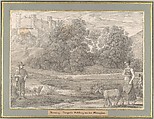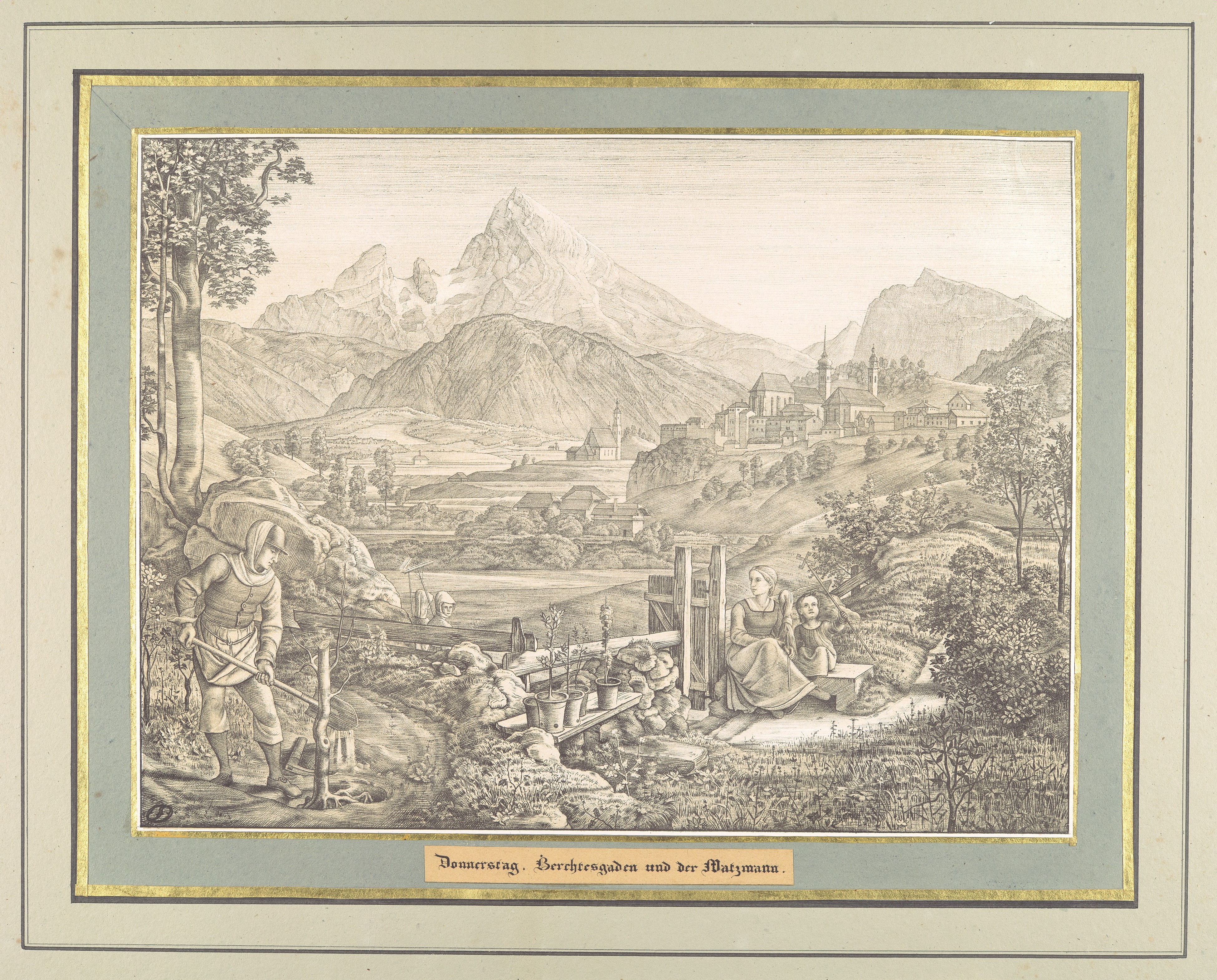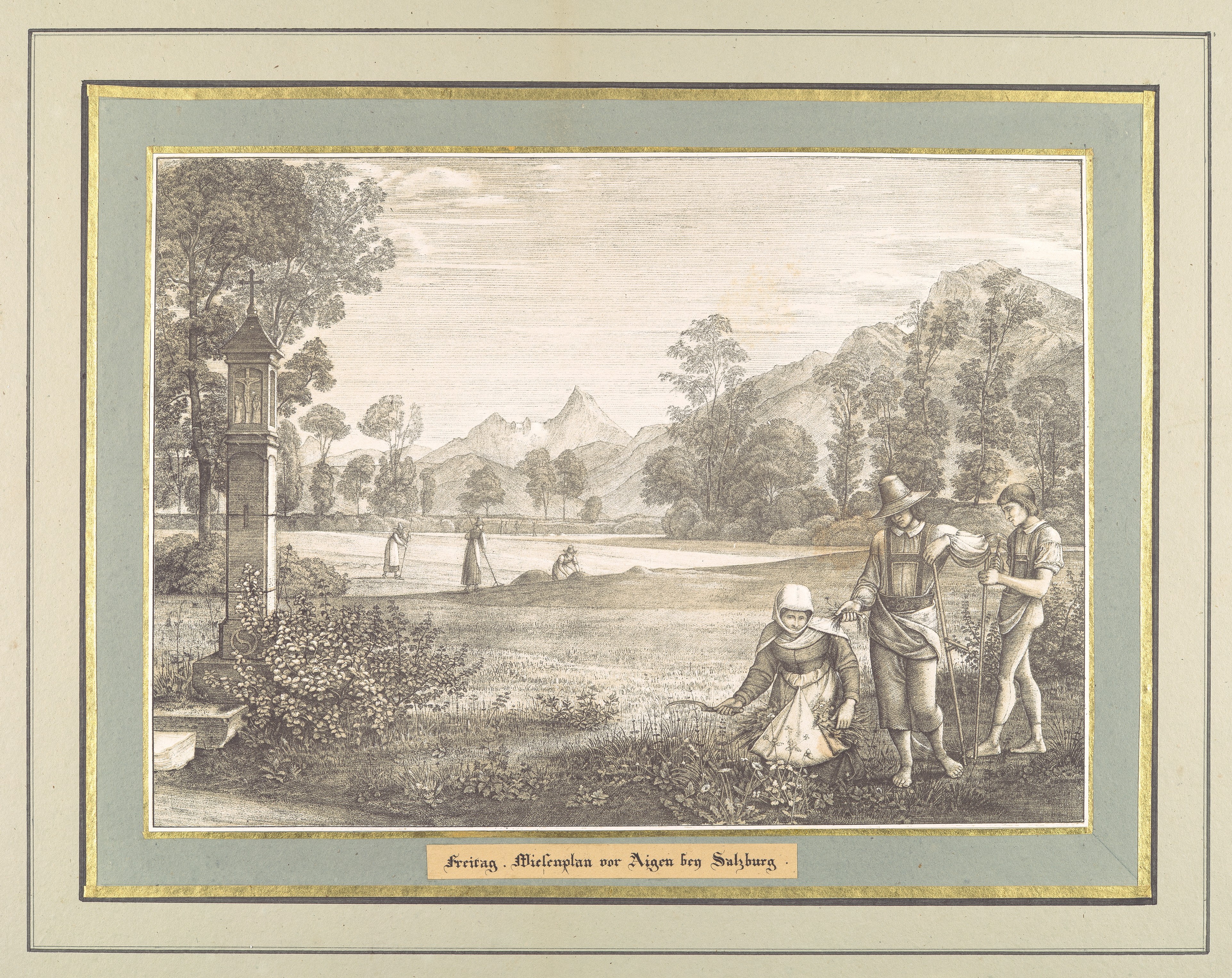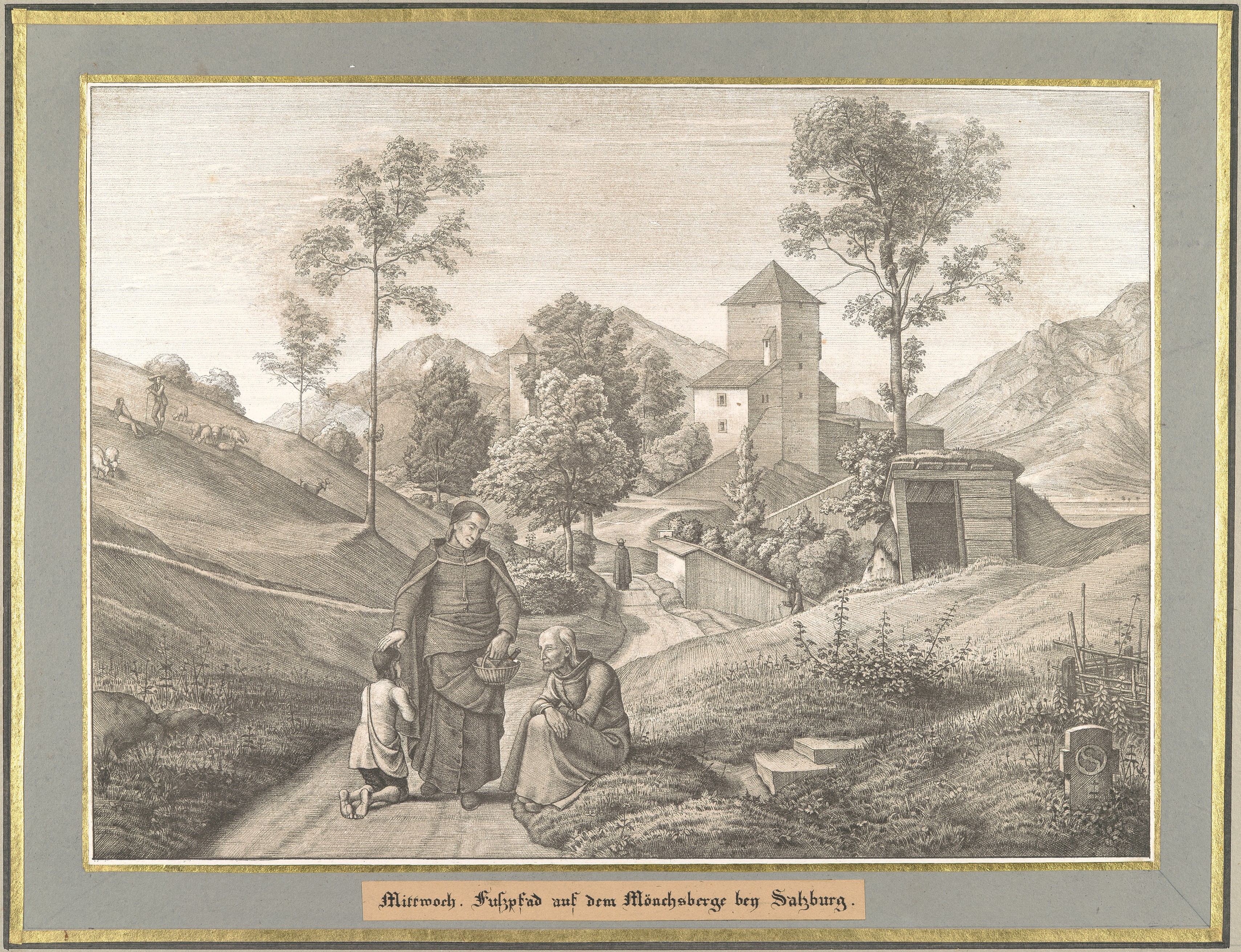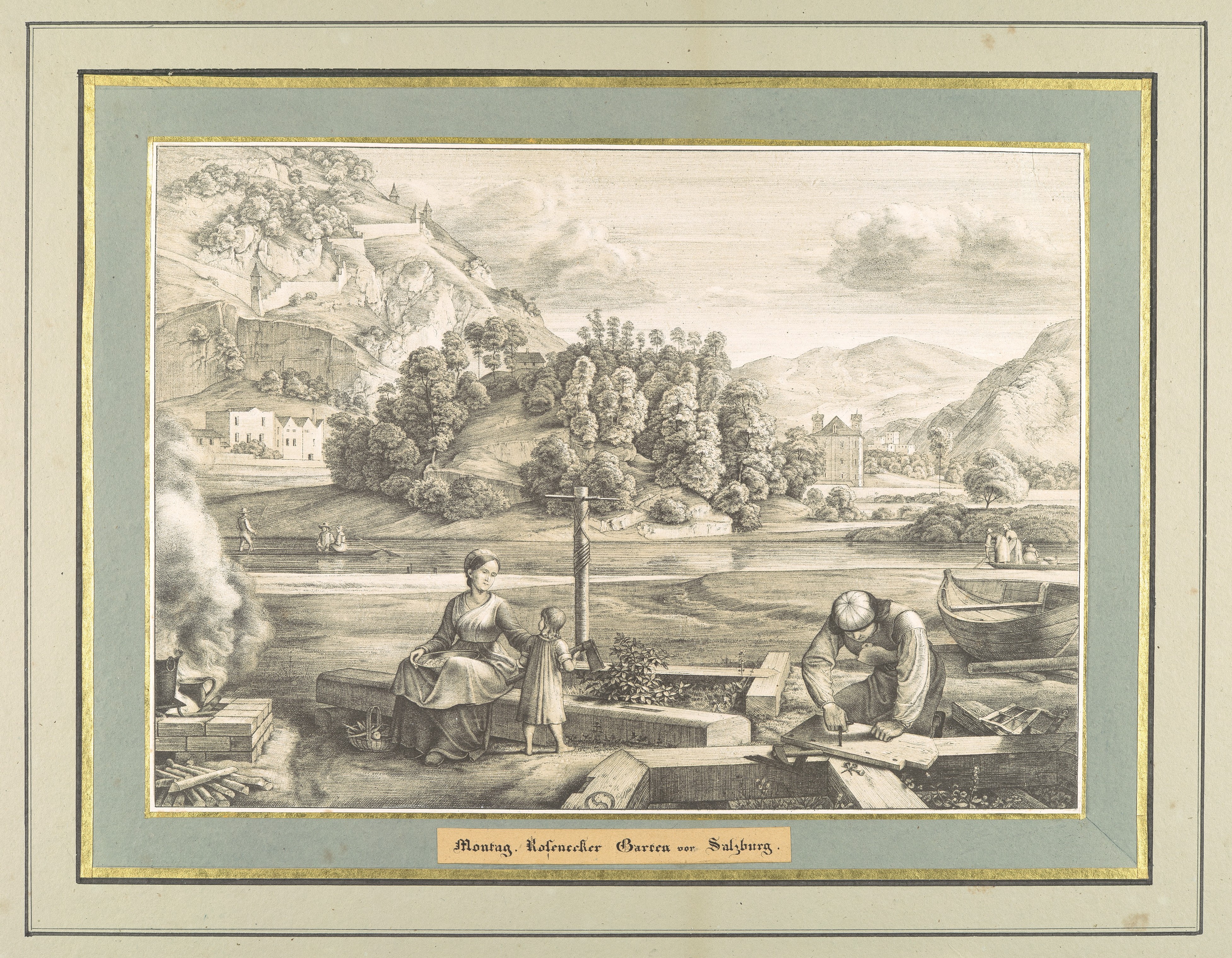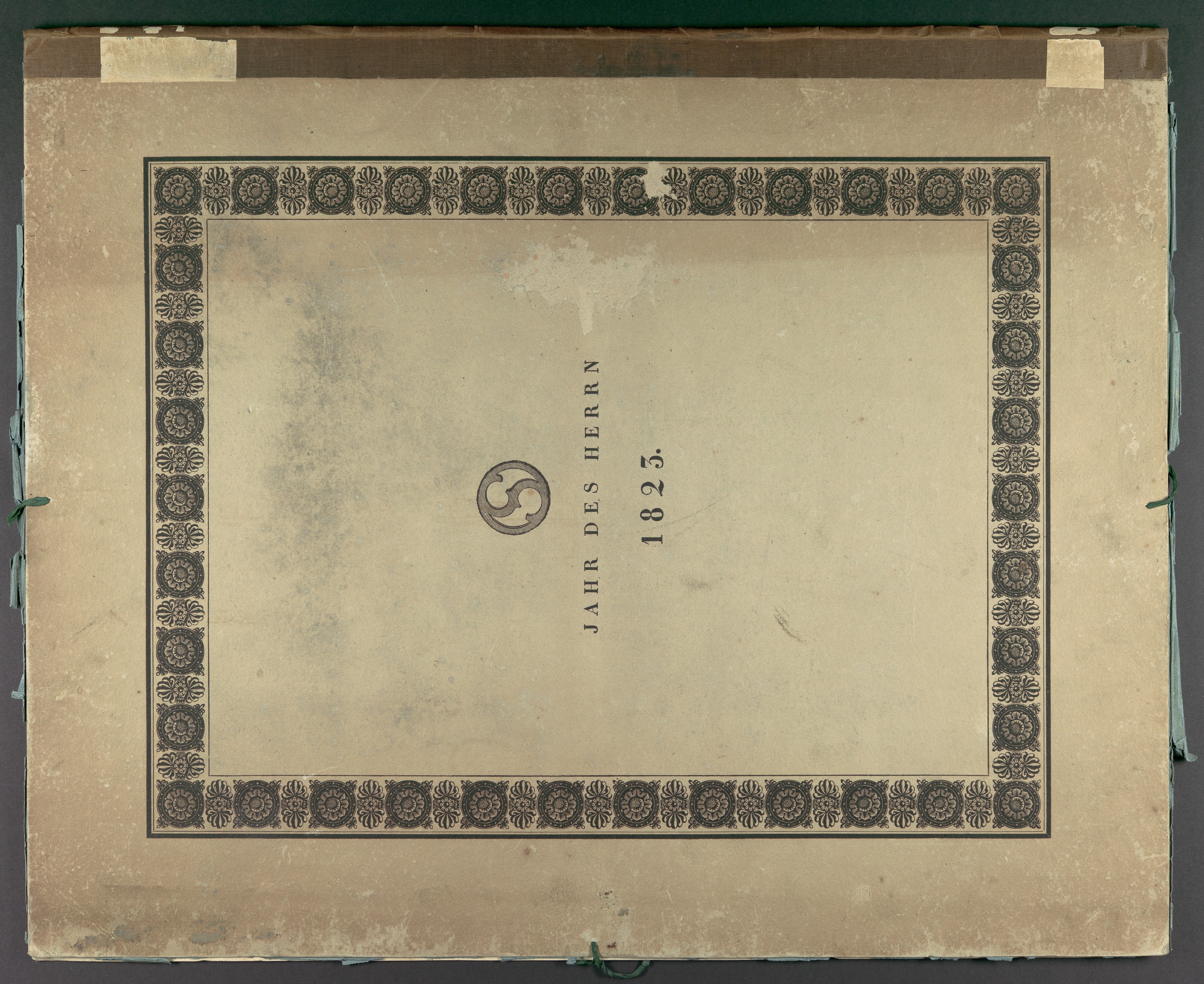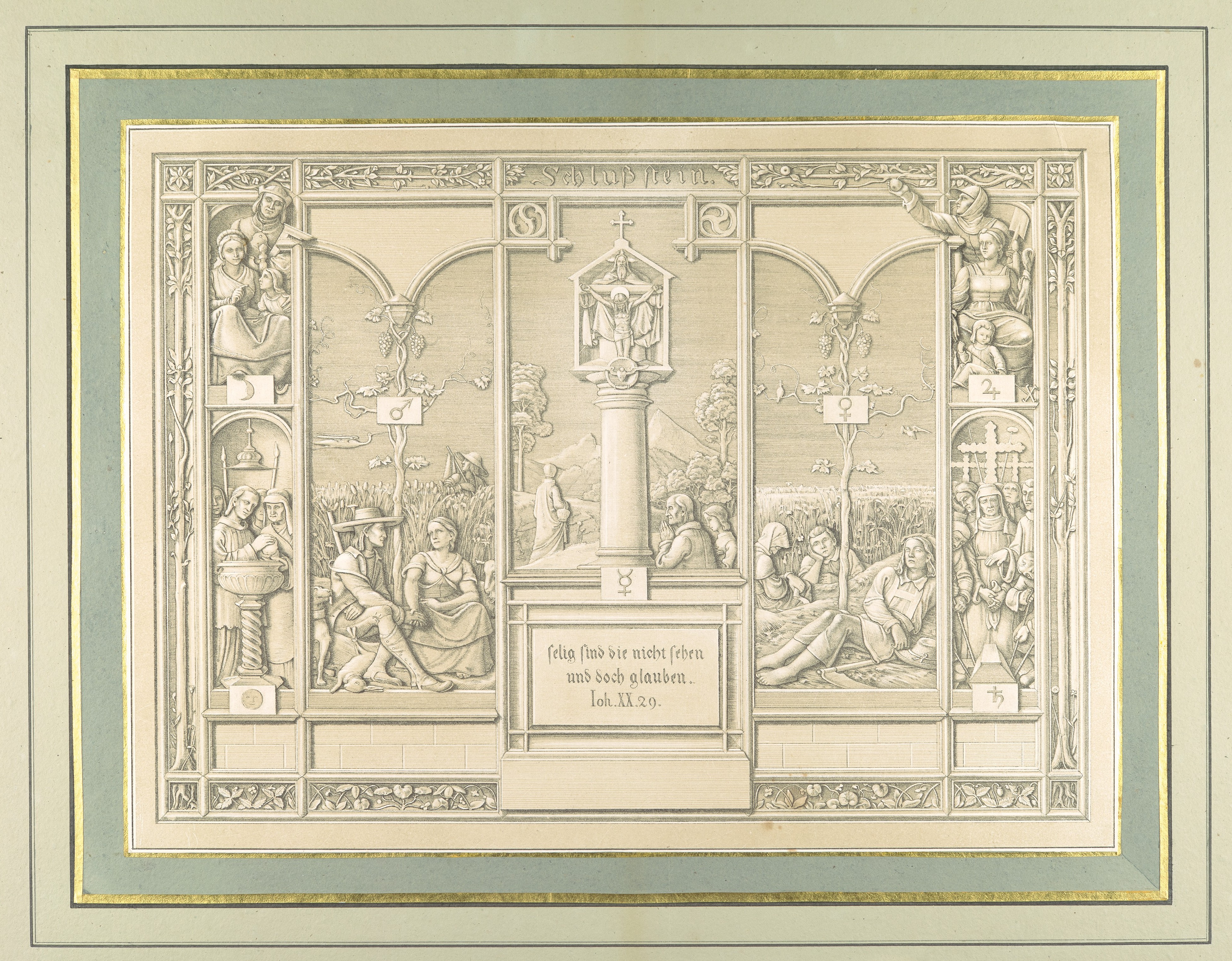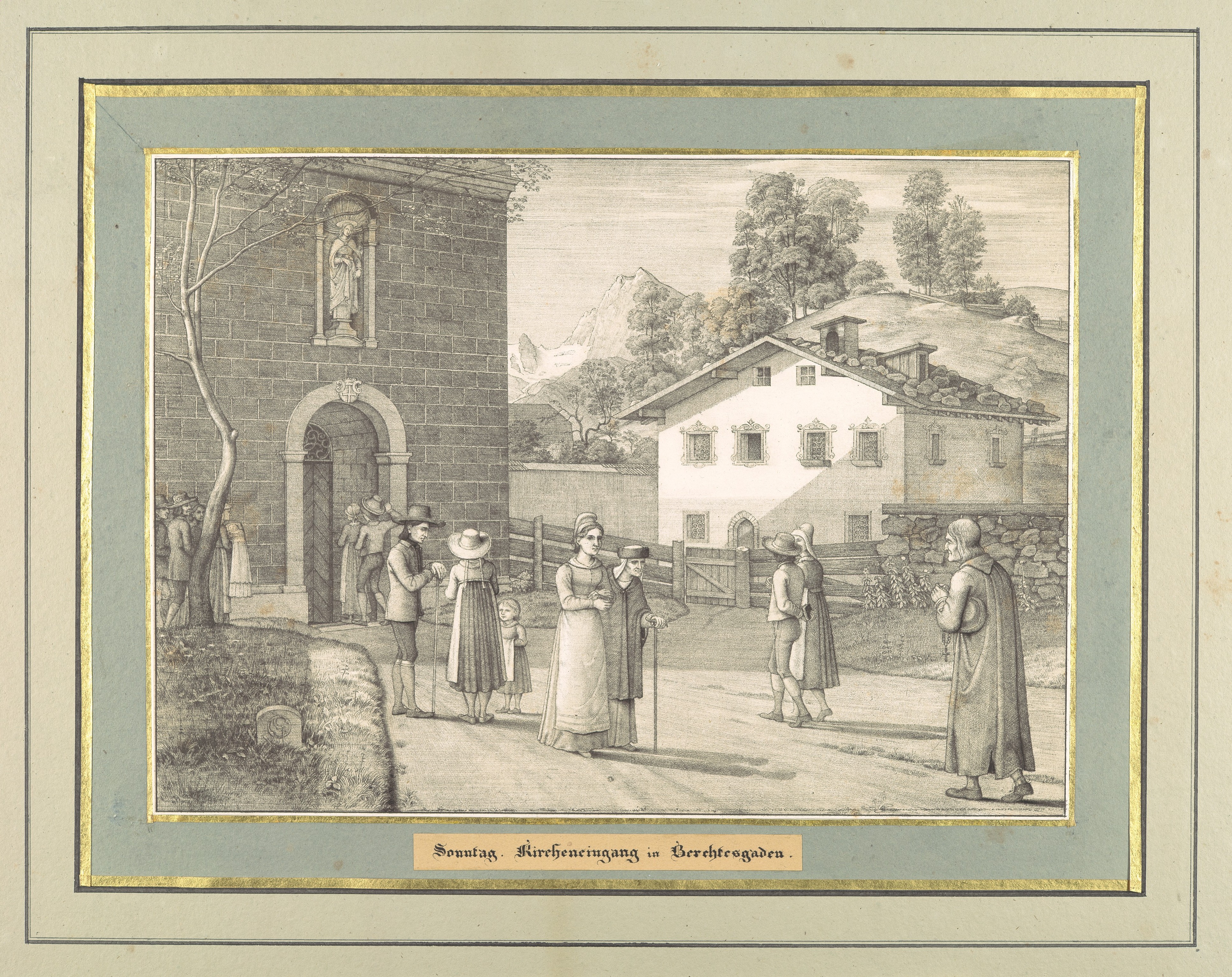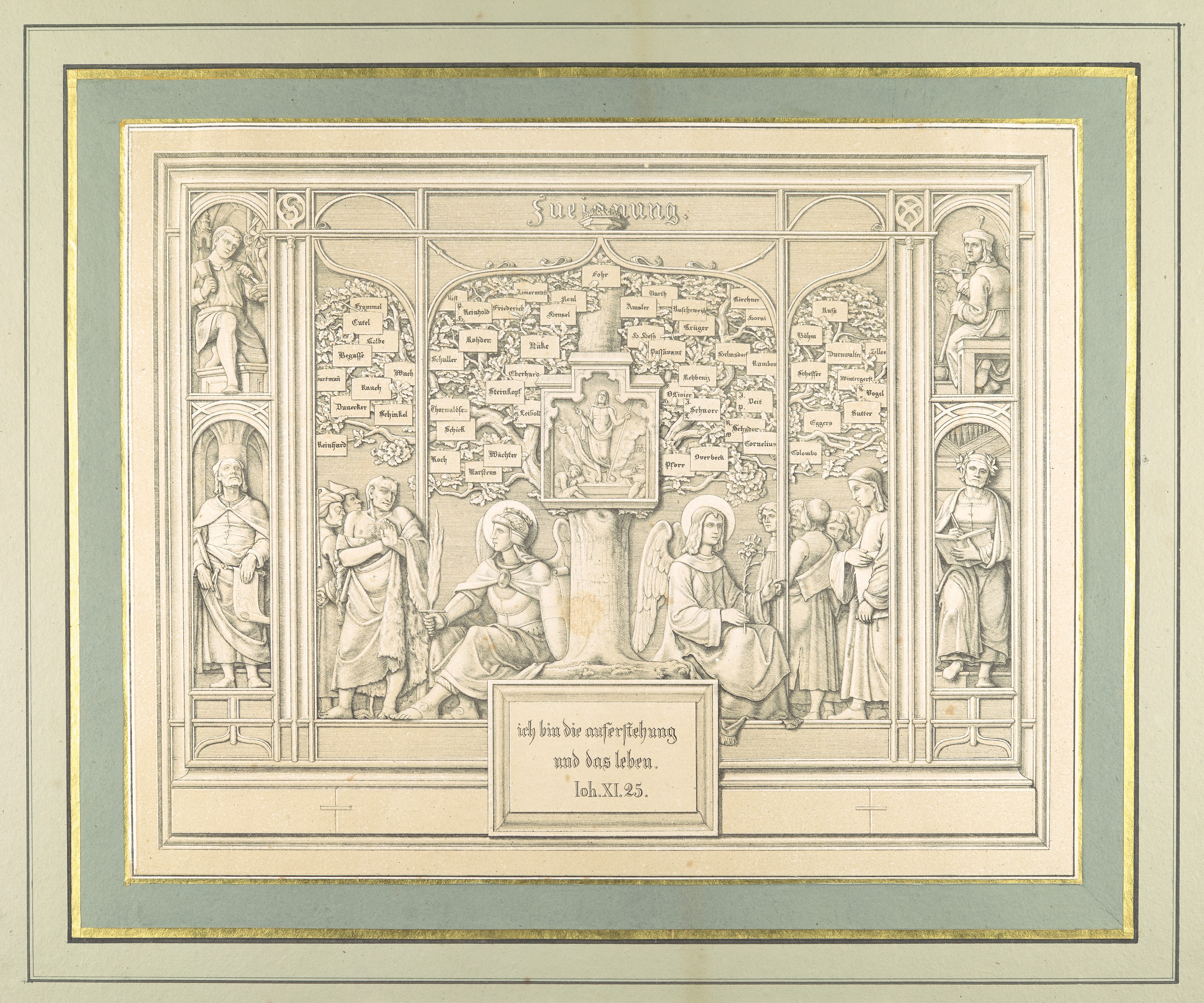Sieben Gegenden aus Salzburg und Berchtesgaden Geordnet nach den sieben Tagen der Woche, verbunden durch zwey allegorische Blätter (Seven Places in Salzburg and Berchtesgaden, Arranged According to the Seven Days of the Week)
Artist and publisher (Johann Heinrich) Ferdinand Olivier German
Not on view
Olivier was so taken with the landscape around Salzburg when he visited the area in 1815 and again in 1817 that he determined to create a series of prints that would share the beauty of these views with his countrymen. The artist painstakingly created the series over a period of five years and published it himself. It is considered not only Olivier's masterpiece but also one of the finest works of early German lithography. The series ultimately comprised two allegorical pages and seven landscapes organized according to the days of the week. He additionally wove into the imagery allusions to biblical stories, and the circle of life, death, and salvation. The precision and subtlety of the artist's technique astonished contemporaries. He created golden shadows by printing with incomparable exactitude an additional tint stone. The areas of white are merely the result of the paper allowed to show through the areas of printed tone. The Museum's set, which includes the original portfolio, was no doubt created as a deluxe edition since it is mounted on elaborate gilt mats.
Due to rights restrictions, this image cannot be enlarged, viewed at full screen, or downloaded.
This artwork is meant to be viewed from right to left. Scroll left to view more.
